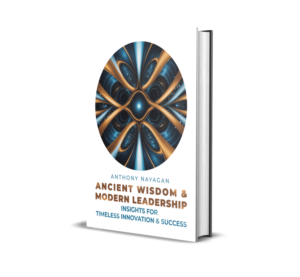
Unlocking Quantum Physics and Spiritual Wisdom for Revolutionary Leadership and Innovation
Materialism in Philosophical & Historical Context
Exploring the Depth of Materialism
When people hear the word “materialism,” their thoughts often jump to an obsession with possessions and consumer culture. The images of people chasing after wealth, luxury, and physical objects come to mind. However, materialism as a philosophy delves into much more profound, intricate ideas. It is an approach to understanding the world that has shaped human thought for millennia. This intellectual tradition argues that all phenomena, including consciousness and thought, arise from physical matter.
In the broad realm of philosophy, materialism can be summarized by two core assertions:
- Physical matter is the fundamental substance of the universe. Everything that exists — including mental states and consciousness — emerges from the interactions of matter.
- Nothing exists outside the material universe. In other words, there is no spiritual realm or supernatural entities; the physical universe encompasses all reality.
Philosophers who champion materialism argue that nothing exists beyond the physical world and that all things, including thoughts and emotions, are products of physical processes. This perspective dominates religious thoughts and dismisses the possibility of spiritual or non-material dimensions of existence.
The Historical Foundations of Materialism
The origins of materialist thought can be traced back to ancient Greece. Thinkers such as Democritus and Epicurus were among the first to propose that everything in the universe consists of atoms — tiny, indivisible particles that make up all matter. These early materialists believed that even the human soul could be explained in physical terms, rejecting any notion of an immortal, spiritual essence.
This perspective laid the groundwork for centuries of scientific inquiry. As Western philosophy developed, materialism gained prominence, particularly during the Enlightenment. The idea that everything could be explained through physical laws and matter aligned with the scientific revolution’s goals of understanding the natural world through observation and reason.
In the 17th and 18th centuries, materialism became deeply intertwined with classical physics. Thinkers like Isaac Newton viewed the universe as a giant machine, made up of physical components that interacted according to precise mathematical laws. Newton’s theories of motion and gravitation were underpinned by a materialist worldview, which held that matter was the foundation of all reality.
Materialism’s Influence on Intellectual Traditions
Materialist philosophy has had a profound impact on various intellectual schools of thought. It has influenced fields ranging from psychology to political theory. For example, Marxist theory is rooted in a materialist understanding of history, known as historical materialism. Karl Marx argued that the material conditions of society, such as the means of production and economic systems, shape human consciousness and societal structures.
According to Marx, human history is driven by changes in material conditions, and the development of ideas is secondary to the economic base of society. This perspective rejects idealist philosophies that suggest ideas alone drive historical progress. Instead, material conditions determine the course of history, and understanding these conditions is crucial to shaping a better future.
Materialism and Classical Physics
Classical physics, especially Newtonian mechanics, was largely shaped by materialist philosophy. Newton’s work, which focused on the laws governing motion acting on matter, provided a materialistic framework for understanding the physical world. The universe, according to Newton, could be understood as a collection of material objects interacting in predictable ways.
This mechanical view of the universe dominated scientific thought for centuries. It suggested that everything could be reduced to matter and motion, and that all phenomena, from the motion of planets to human thought, could be explained through physical processes.
However, as science advanced, new discoveries began to challenge this materialist worldview. The rise of modern physics, particularly quantum mechanics, revealed that matter is not as simple or straightforward as Newtonian mechanics had once suggested.
Challenges to Materialism in the Age of Quantum Mechanics
Quantum Mechanics and the Wave-Particle Duality
Quantum mechanics, developed in the early 20th century, introduced a major challenge to the traditional materialist worldview. One of the key discoveries in quantum mechanics is the concept of wave-particle duality. This principle shows that particles, such as electrons, can behave both as particles and as waves. This dual nature challenges the traditional materialist view that particles are the fundamental building blocks of reality.
The wave-particle duality suggests that matter is not as solid and definite as previously believed. Instead, particles can exhibit wave-like behavior, spreading out over space and interacting with other particles in ways that defy classical physics. This discovery opened up a new understanding of the universe, where matter and energy are not separate, but intertwined in complex ways.
Quantum Fields and Energy
Modern physics has further complicated the materialist perspective by introducing the concept of quantum fields. According to quantum field theory, the universe is not made up of solid particles, but rather continuous, fluid-like fields. These quantum fields exist throughout the universe, and particles are simply excitations or disturbances within these fields.
In this view, matter is no longer seen as the most fundamental substance in the universe. Instead, energy fields, which permeate all of space, play a central role in shaping the physical world. These fields govern the interactions between particles, and their behavior can only be understood by considering both matter and energy as interconnected aspects of reality.
The implications of quantum mechanics and quantum field theory are profound. They suggest that the universe is not solely composed of matter in isolation, but also of energy and wave-like qualities that govern the interactions between particles. This challenges the traditional materialist perspective, which holds that only matter exists, and suggests that a more sophisticated understanding of reality is needed.
Rethinking Materialism in Light of Quantum Physics
The discoveries of quantum mechanics force us to reevaluate the foundations of materialism. The classical view that everything is reducible to matter and motion is no longer sufficient to explain the complexities of the universe. Instead, we must consider the role of energy and quantum fields, which defy traditional materialist explanations.
In light of these discoveries, it is clear that the materialist worldview is too limited to fully explain the nature of reality. The universe is far more complex than a simple collection of particles interacting in predictable ways. Matter, energy, and the interactions between them create a dynamic, ever-changing reality that cannot be reduced to a purely materialistic explanation.
Spiritual Interpretations of Quantum Mechanics
The Manifest and Unmanifest
Quantum mechanics not only challenges materialism but also aligns with certain spiritual concepts. One such concept is the distinction between the “manifest” and “unmanifest” aspects of reality. In spiritual discourse, the manifest refers to the visible, tangible world of matter, while the unmanifest refers to the invisible, intangible dimensions of existence.
In quantum mechanics, particles can be thought of as representing the manifest, the physical reality that we can observe and measure. Waves, on the other hand, represent the unmanifest, the underlying energy fields that shape the behavior of particles but cannot be directly observed.
From a spiritual perspective, this distinction mirrors the idea that there is more to reality than what we can perceive with our senses. The unmanifest represents the deeper, unseen forces that give rise to the manifest world. Authentic spiritual teachings often emphasize the importance of recognizing and developing our awareness of these unmanifest aspects of reality, which shape our experiences and influence our growth.
Material Progress vs. Spiritual Growth
Materialism, in its everyday sense, often leads to a focus on material progress — accumulating wealth, possessions, and status. However, spiritual traditions emphasize that true progress involves more than just material success. Spiritual growth requires nurturing the unmanifest aspects of our being, such as our inner awareness, compassion, and connection to the broader universe.
Quantum mechanics, with its emphasis on the interplay between matter and energy, supports this spiritual perspective. It suggests that the material world alone is not sufficient to explain reality. Instead, we must also consider the invisible forces and energy fields that shape the physical world.
In this sense, quantum mechanics provides a bridge between materialism and spirituality, encouraging us to look beyond the physical world and recognize the deeper, interconnected nature of reality. This understanding can lead to a more holistic approach to personal and collective growth, where both material progress and spiritual development are valued.
Conclusion: Bridging Materialism, Modern Physics, and Spirituality
Materialism has played a central role in shaping our understanding of the universe, particularly in the fields of classical physics and scientific inquiry. However, as modern physics has shown, the universe is far more complex than the materialist worldview suggests.
Quantum mechanics challenges the traditional materialist perspective by revealing the dual nature of particles, the importance of quantum fields, and the complex interactions between matter and energy. These discoveries suggest that reality cannot be fully explained by matter alone.
At the same time, spiritual teachings emphasize the importance of recognizing the unmanifest aspects of existence, which influence the physical world and shape our experiences. By embracing both the manifest and unmanifest, materialism and spirituality can be brought together to form a more complete understanding of reality.
In this way, quantum mechanics and spiritual philosophy offer a path toward a deeper, more holistic understanding of the universe — one that acknowledges the limitations of materialism and opens up new possibilities for growth and understanding.
A Journey Toward Timeless Innovation
This blog is one in a series of articles that will explore how we can overcome the inevitability of decline to create and innovate in ways that withstand the test of time. How can leaders and innovators draw on ancient wisdom to guide their modern strategies? What practices can ensure that what they build today remains relevant and impactful for generations to come?
If these questions intrigue you, I invite you to visit Supreme Realizationand download a prerelease copy of Anthony Nayagan’s “ANCIENT WISDOM & MODERN LEADERSHIP: Insights for Timeless Innovation & Success.”
At Supreme Realization, our mission is to help leaders and creative individuals live spiritually enriched lives. Anthony Nayagan coaches leaders and innovators to realize their divine nature, move beyond the ordinary, and enter into extraordinary Wisdom. Join us on this journey to discover how ancient wisdom can guide modern leadership and innovation.

